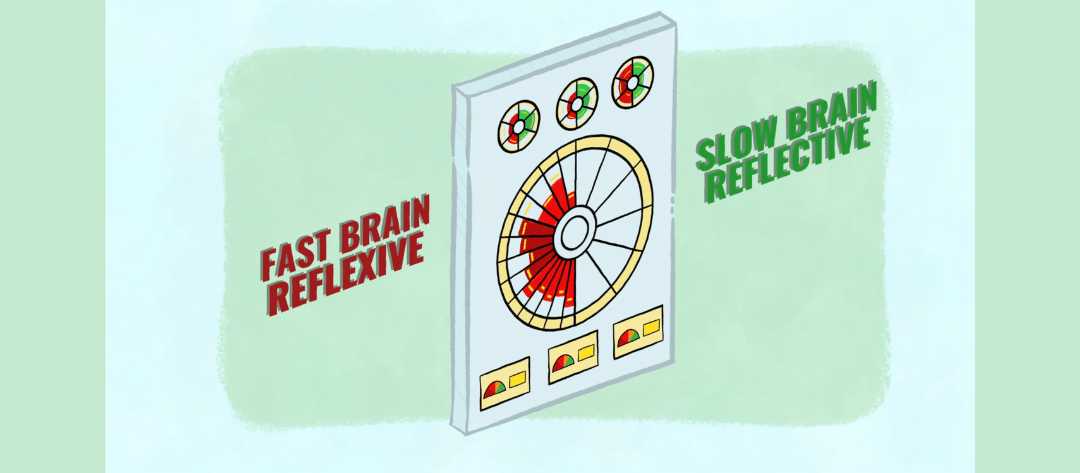Culture doesn’t come from a mission statement or a set of values painted on the wall. It emerges from the behaviours that leaders model every day, especially when things get difficult. In those moments, people take cues. They notice what gets rewarded, what gets ignored, and what feels risky to say out loud.
Leaders often underestimate how much their own habits shape the culture around them. This isn’t about being perfect or always getting it right. It is about what people see, feel, and respond to consistently over time.
When certain behaviours become familiar, like avoiding hard conversations, stepping in too quickly, or holding back ideas, the team adjusts. A pattern forms. That pattern becomes the culture of your organisation.
These patterns are often so subtle that leaders don’t realise they’re creating them. Over time though, they set the tone for how people work, speak up, make decisions, and take ownership. The encouraging part is that once leaders can see these patterns, they can shift them.
This article explores how everyday leadership habits shape culture in quiet but powerful ways.
Red Zone, Green Zone: The Behaviours Behind Culture
At the core of the Leadership Growth Profile is the Red and Green Zone framework. This framework offers a clear way to understand how leadership behaviours shape culture over time.
Green Zone behaviours are intentional, grounded, and aligned with values. They build trust, encourage contribution, and support shared ownership.
Red Zone behaviours are reactive and often automatic. They emerge under stress and can lead to caution, confusion, or disconnection, even when the leader has good intentions.
When these behaviours become habitual, they begin to shape what the team expects. And over time, those expectations start to define the culture.
For example:
- A leader who avoids difficult conversations may create a culture of silence
- A leader who micromanages can unintentionally limit initiative
- A leader who deflects blame teaches others to protect themselves rather than collaborate
These patterns often go unnoticed, but they shape everything. Culture isn’t what leaders intend, but what people experience repeatedly.
Red Zone Patterns: The Quiet Culture Shapers
Most leaders want to create a positive team culture. They work hard, show up with good intentions, and try to support their people. But under stress, even the most capable leaders can slip into habits that quietly send the opposite message. These are Red Zone behaviours.
Red Zone behaviours are reactive. They often come from past experiences, old beliefs, or emotional patterns that operate just below awareness. When pressure builds, these behaviours surface quickly. They feel familiar and protective, but they rarely create clarity or trust.
The Leadership Growth Profile identifies three core Red Zone patterns. Each one shapes culture in a specific way:
Approval: Seeking acceptance, avoiding conflict, or holding back feedback to keep the peace. These habits often lead to a culture where people are kind but not clear. Accountability stays low because challenge feels risky.
Control: Micromanaging, dominating conversations, or stepping in too quickly. These patterns often create cultures of compliance. Teams wait for direction, avoid risk, and stop showing initiative.
Security: Withdrawing, defending ideas, or slowing decisions to avoid uncertainty. These responses can lead to cultures where caution replaces creativity. Progress stalls, and change feels unsafe.
These patterns don’t always look dramatic. A leader might cut someone off in a meeting, delay a decision, or soften feedback to avoid discomfort. Each moment on its own may seem small. But repeated over time, they change what people believe is safe to say or do.
Consider a leader who wants to stay involved and support their team. They step into meetings often, offer quick fixes, and rework final outputs to raise the bar. The intention is positive. But the effect is a team that stops taking ownership. They wait, defer, and slowly lose confidence in their own judgment.
This is the quiet power of the Red Zone. It doesn’t shout; it shapes.
Green Zone Practices: The Everyday Drivers of Culture
The Green Zone describes a set of intentional leadership behaviours. These behaviours are values-aligned, consistent, and grounded in purpose. They help leaders respond with clarity rather than react out of habit. Green Zone leadership creates the conditions for trust, learning, and ownership to thrive.
In the Leadership Growth Profile, Green Zone behaviours are grouped into three core areas. Each area reflects a key leadership focus and includes two specific practices.
Align: This area is about clarity of purpose and alignment of values. Leaders in this space guide others by staying focused and authentic.
- Inspire a Vision: Share a clear and meaningful direction that people can commit to
- Lead from Values: Act in ways that reflect personal and organisational values, even under pressure
Achieve: This area supports accountability and performance. It’s about making expectations clear and celebrating progress.
- Drive Accountability: Set clear goals, own results, and hold others to shared standards
- Engage the Heart: Recognise effort, celebrate success, and connect outcomes to purpose
Grow: This area promotes learning and collaboration. It encourages curiosity, experimentation, and shared leadership.
- Cultivate Curiosity: Ask thoughtful questions and stay open to new ideas
- Empower Others: Create space for others to lead, contribute, and grow
Green Zone behaviours can also show up in small, everyday moments. Active listening, pausing before reacting, asking better questions, and encouraging feedback all signal that it’s safe to proceed with intention.
When these behaviours become the norm, they shift the culture. People stop waiting for direction and start taking ownership. Teams adapt more quickly, and trust becomes easier to build and maintain.
In comparison, Red Zone patterns often create cultures of caution, dependency, and defensiveness. Innovation slows, and trust becomes fragile. Green Zone leadership helps reverse that. It supports a culture where people take initiative, learn from mistakes, and work together with energy and clarity.
This shift isn’t just about behaviour. It’s about what the team believes is possible. That belief is what defines culture.
How Red Zone Behaviours Go Unnoticed (and Become Normal)
Red Zone behaviours often don’t register as problems. They tend to present as decisiveness, involvement, or concern for the team’s well-being. From the leader’s perspective, these actions can feel productive or even necessary.
The issue lies in how these behaviours are both perceived and repeated. What seems like support may come across as control. What feels like efficiency may be experienced as interruption or micromanagement. Because these patterns emerge under pressure and appear reasonable on the surface, they often go unchecked.
This is how Red Zone habits become embedded.
- A leader who routinely fills silence in meetings may unintentionally discourage reflection.
- A pattern of revising team outputs “for quality” can lead to reduced ownership.
- When feedback is softened to preserve harmony, the team may lose clarity around expectations.
These aren’t one-off moments. They form over time, through repetition. And the cumulative effect is cultural. People begin to shift their behaviour not because they were told to, but because the environment trained them to.
These patterns are difficult to detect from the inside. They become so normalised that they fade into the background. Yet their impact is significant. Teams adjust around what feels safe, and what feels safe is often shaped by the leader’s unspoken habits.
Left unexamined, these habits shape the tone of a team or organisation. As they become more frequent, they start to define the culture far more than any written value ever could.
How the Leadership Growth Profile Helps Leaders Shift Culture Through Self-Awareness
Most leadership assessments focus on traits or abstract competencies. The Leadership Growth Profile does something different. It maps behaviour as it’s experienced by others — drawing feedback from direct reports, peers, and managers — to reveal patterns leaders often can’t see on their own.
This multi-rater feedback gives leaders a fuller, more accurate view of how they’re showing up across the system. The Leadership Growth Profile’s structure goes beyond generic feedback and instead focuses on observable, recurring behaviours, particularly those that emerge under stress.
Leaders receive a visual profile that:
- Shows where they default to Red Zone patterns under pressure
- Maps consistent Green Zone behaviours that build trust and clarity
- Highlights gaps between self-perception and external feedback
- Reveals how behaviour differs across roles and relationships
These insights help leaders move from general awareness to specific action. A pattern of interrupting, over-controlling, or avoiding conflict is no longer vague. It becomes clear and addressable.
| LGP Insight → Culture Shift When leaders shift their own behaviour, they create new possibilities for the people around them. Teams begin to adapt to trust, not tension. |
As leaders act with more intention, teams respond. Dialogue opens up and ownership increases. Through repeated, visible changes in the way leaders engage, the culture begins to shift.
The result is more than personal growth. It’s the beginning of systemic change.
A Great Culture Starts with Great Leadership
Leadership culture isn’t defined by mission statements or values on paper. It’s shaped through behaviour, especially in moments of pressure, conflict, or change. These are the moments that signal what’s safe, what’s valued, and what’s expected.
The most powerful shift a leader can make isn’t about style or surface. It’s about behaviour. The way a leader shows up, day after day, becomes the rhythm the team follows. When those behaviours are clear, grounded, and consistent, they create trust and focus. When they’re reactive or unchecked, they create uncertainty, even if the intention is good.
This begins with a simple question:
What patterns might you be modelling without realising it, and what kind of culture are they creating?
You don’t need to be perfect to lead well. But you do need to be aware. With the right insight, leaders can choose how they respond, how they relate, and how they shape the environment around them.
The Leadership Growth Profile offers that insight. It helps leaders see what they couldn’t see on their own and turn that awareness into meaningful change. To learn more, check out the Leadership Growth Profile or get in touch with our team today.








